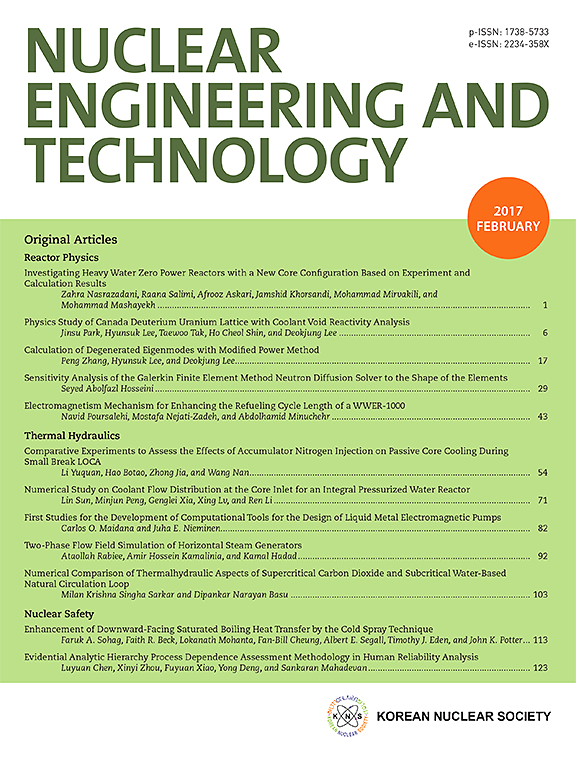From visual representation to signal flow connection: A new modeling approach for STAMP
IF 2.6
3区 工程技术
Q1 NUCLEAR SCIENCE & TECHNOLOGY
引用次数: 0
Abstract
System-Theoretic Accident Model and Processes (STAMP) and System-Theoretic Process Analysis (STPA) have emerged as novel perspectives for analyzing hazards in control systems, revealing previously unnoticed hazards that traditional failure propagation analyses may overlook. Their contribution, therefore, holds significant implications in hazard analysis, but a challenge arises in the modeling of cl systems at a fairly detailed level, where it becomes inefficient to distinguish the flow of a particular signal. To address this concern, this paper proposes the digital representation of the modeling elements and the correlation between the elements in STAMP. The digitally represented STAMP can be used to distinguish the flow of a particular signal and can also be used as a basis for the implementation of supportive functions for STPA. Therefore, potential applications, e.g. highlighting or reorganizing a specific signal flow, incomplete part identification within a control structure, impact of the unavailability of a system element, are also discussed in this paper. The authors believe that the digital representation of STAMP and its applications proposed in this paper will improve the efficiency of the process of performing STAMP/STPA at a detailed level.
从可视化表示到信号流连接:一种新的STAMP建模方法
系统理论事故模型和过程(STAMP)和系统理论过程分析(STPA)已经成为分析控制系统中危险的新视角,揭示了传统故障传播分析可能忽略的以前未被注意的危险。因此,它们的贡献在危害分析中具有重要意义,但是在相当详细的级别上对cl系统进行建模时出现了一个挑战,在这个级别上,区分特定信号的流变得低效。为了解决这个问题,本文提出了STAMP中建模元素的数字表示和元素之间的相关性。数字表示的STAMP可用于区分特定信号的流量,也可作为实现STPA支持功能的基础。因此,本文还讨论了潜在的应用,例如突出或重组特定的信号流,控制结构中不完整的部分识别,系统元素不可用的影响。作者认为,本文提出的STAMP数字化表示及其应用将从细节上提高STAMP/STPA执行过程的效率。
本文章由计算机程序翻译,如有差异,请以英文原文为准。
求助全文
约1分钟内获得全文
求助全文
来源期刊

Nuclear Engineering and Technology
工程技术-核科学技术
CiteScore
4.80
自引率
7.40%
发文量
431
审稿时长
3.5 months
期刊介绍:
Nuclear Engineering and Technology (NET), an international journal of the Korean Nuclear Society (KNS), publishes peer-reviewed papers on original research, ideas and developments in all areas of the field of nuclear science and technology. NET bimonthly publishes original articles, reviews, and technical notes. The journal is listed in the Science Citation Index Expanded (SCIE) of Thomson Reuters.
NET covers all fields for peaceful utilization of nuclear energy and radiation as follows:
1) Reactor Physics
2) Thermal Hydraulics
3) Nuclear Safety
4) Nuclear I&C
5) Nuclear Physics, Fusion, and Laser Technology
6) Nuclear Fuel Cycle and Radioactive Waste Management
7) Nuclear Fuel and Reactor Materials
8) Radiation Application
9) Radiation Protection
10) Nuclear Structural Analysis and Plant Management & Maintenance
11) Nuclear Policy, Economics, and Human Resource Development
 求助内容:
求助内容: 应助结果提醒方式:
应助结果提醒方式:


